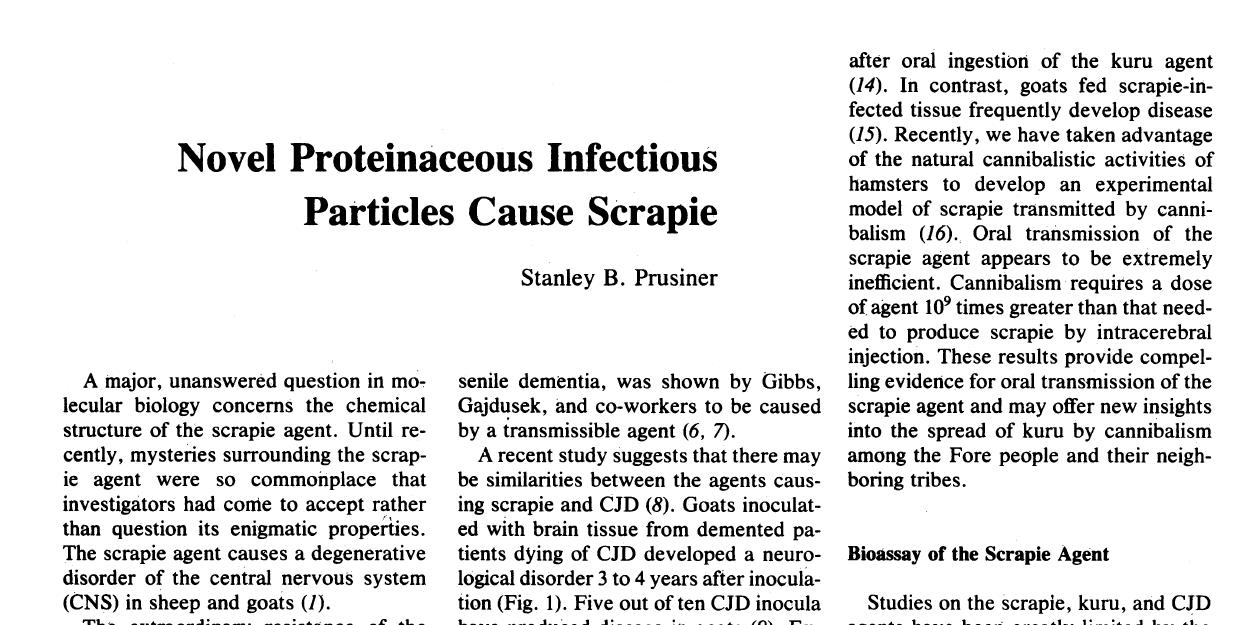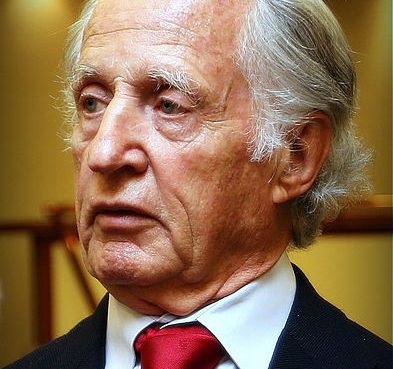Proteinaceous Infectious Particle, commonly abbreviated as ‘prion’, is now known as the cause of a number of diseases in animals and human. The examples of such animal diseases include Scrapie in sheep, Transmissible Encephalopathy of mink, Chronic Wasting Disease of cervids, and Bovine Spongiform Encephalopathy of cattle. In human, it causes Creutzfeldt-Jakob disease (CJD), of which Kuru is another known variant. Stanley B. Prusiner in the year 1982 first coined the term “Prion” while explaining the cause of Scrapie in sheep. Prusiner published this study in the scientific journal “Science” under the title “Novel Proteinaceous Infectious Particles Cause Scrapie”. One of the lines mentioned in the land mark paper is quoted below-
“Because the novel properties of the Scrapie agent distinguish it from viruses, plasmids, and viroids, a new term “prion” is proposed to denote a small proteinaceous infectious particle, which is resistant to inactivation by most procedures that modify nucleic acids.”
-Stanley B. Prusiner
The prion proteins (PrP) are found throughout the body of healthy human and animals. The PrP found in infectious material has a structural difference with the normal PrP and they are resistant to protease. The normal form of the Prion protein is called PrPC, while the infectious form is known as PrPSc, where the C refers to ‘cellular’ PrP and the Sc refers to ‘Scrapie’. The structure of Normal cellular prion protein (PrPC) is well-defined while the same for PrPSc is polydisperse and defined at a relatively poor level (Wikipedia).
Prusiner’s work on Prion started with his studies on neurodegenerative diseases including Scrapie since 1972. His findings on Scrapie were against the views of majority in the scientific community at that time, who believed that Scrapie was a slow viral disease caused by some unidentified virus. Prusiner, in his Nobel Biography stated that convincing the contemporary virologists, regarding the proteinaceous nature of the infectious particle was one of the toughest jobs. In the initial years of his research on Scrapie, Prusiner’s lab had hard time in arranging funding for the ongoing activities and some of the existing fundings were also discontinued for not being able to produce convincing results. He had to run after alternate financial support to keep the research going. Finally, the persistent effort of almost three decades had its most coveted climax in the Nobel Award Ceremony in the Concert Hall in Stockholm on 10th December 1997, where he was presented with the Nobel Prize in the field of Physiology and Medicine.
References:
-
Wikipedia (https://en.wikipedia.org/wiki/Prion#Prion_protein) visited on 21-09-2017
-
Prusiner, S. B. (1982) Novel Proteinaceous Infectious Particles Cause Scrapie. Science. 216:136-144.

Fig: The original paper published by Prusiner in Science




